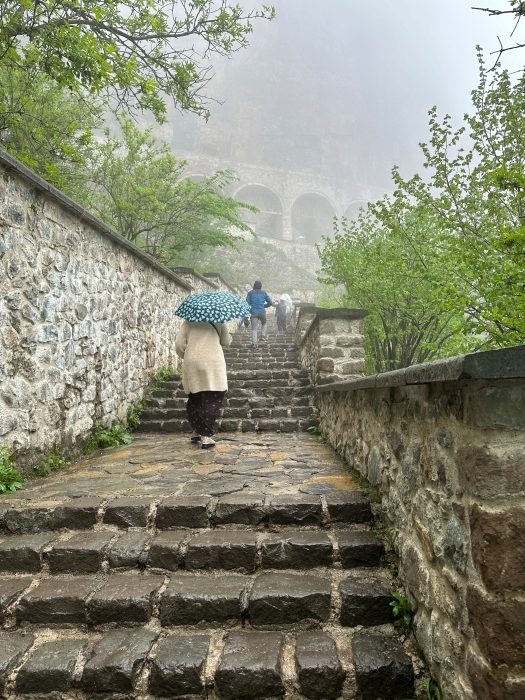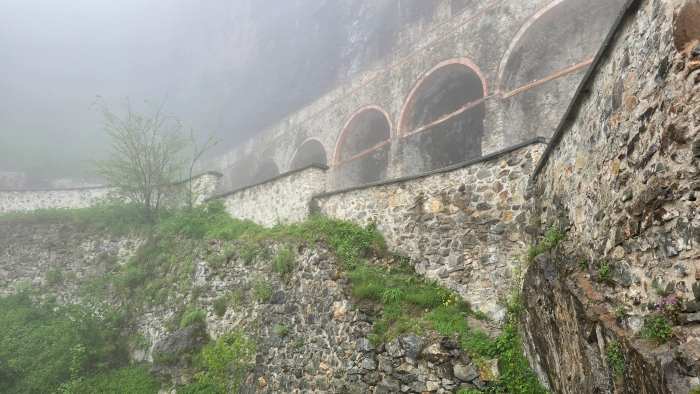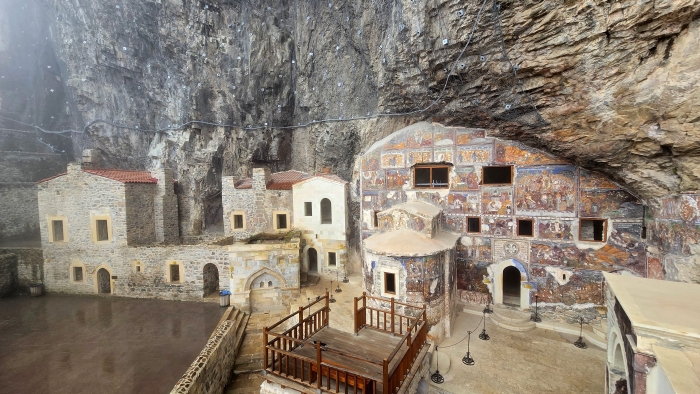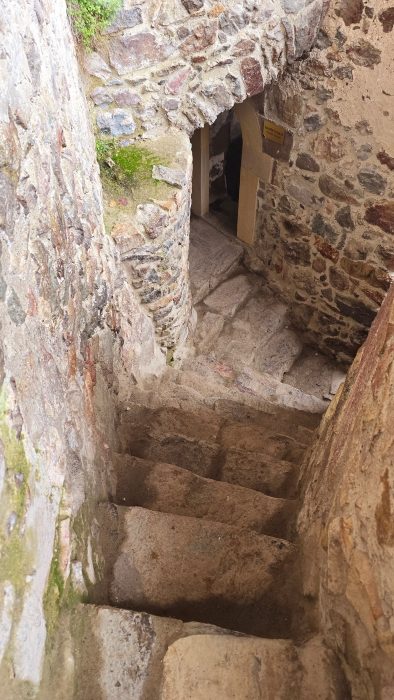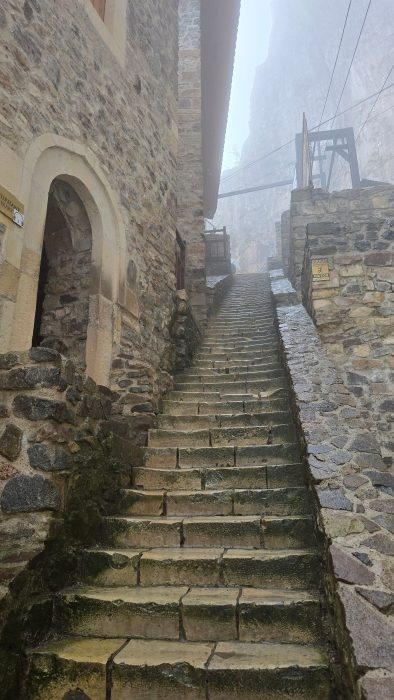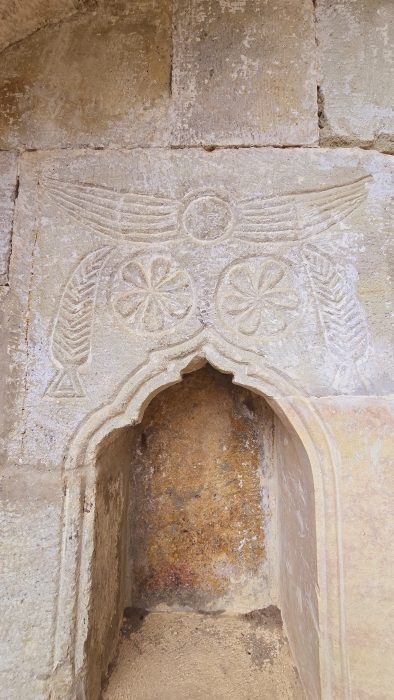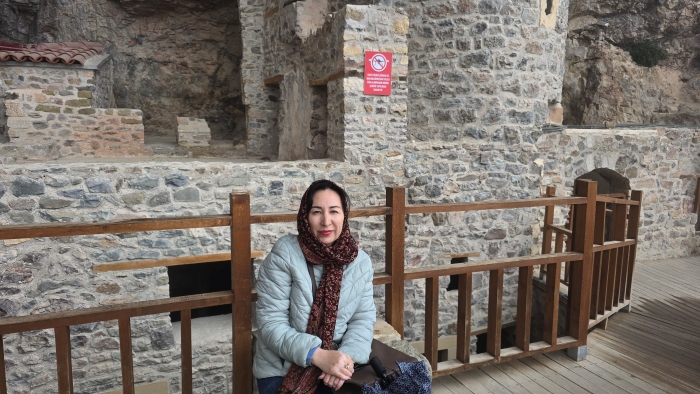Elvira Kadyrova, Trabzon, Maçka district
After a 30-minute minibus ride from Trabzon, we arrived at the foot of a cliff in Altındere National Park. A 15-minute climb up wooden walkways and steep stairs followed, driven by curiosity, until we reached an altitude of 1,200 meters above sea level. Along the way, I couldn’t help but gaze upward, captivated by the sight of pine treetops shrouded in morning mist, lending a mystical charm to our ascent. Finally, the first stone structures came into view— austere yet majestic. This is Sumela Monastery, an ancient Orthodox sanctuary built some 1,600 years ago in the Maçka district.
Dedicated to the Virgin Mary (Panagia), Sumela Monastery was founded in the 4th century. Its name, “Sumela,” derives from the Greek word ‘mela’, meaning “black” or “gloomy,” reflecting the rugged beauty of Karadağ (Black Mountain), on whose slopes it stands. According to legend, the Virgin Mary appeared in a dream to two Athenian priests, Barnabas and Sophronius, instructing them to find her icon, believed to have been painted by Saint Luke. Following her guidance, the monks discovered the icon in a cave on Mount Mela and established the monastery there.
Throughout its long history, the monastery has seen both prosperity and decline. It endured plunder but always rose again. During the Empire of Trebizond (13th–15th centuries), Sumela’s significance grew, and Ottoman sultans bestowed gifts upon it. The monastery acquired its current form through major renovations and expansions in the 18th and 19th centuries.
In the 19th century, a thriving community resided here. The complex encompassed a cave church (katholikon), 10 chapels of varying sizes, a holy spring (ayazma), a library, a bell tower, a two-story kitchen, a fountain, administrative buildings, monks’ cells, and guest rooms. The entrance, framed by high staircases and a robust defensive wall, underscored the structure’s grandeur.
In 1923, following the Lausanne Peace Treaty and the population exchange between Turkey and Greece, the monastery was abandoned. Today, it operates as a monumental museum, drawing tourists from around the globe. Approximately 80% of the complex is open to visitors, though the library and bell tower have not survived. The library’s rare manuscripts, renowned for their rich content, are now preserved in Istanbul’s Hagia Sophia Mosque.
The cave church remains the main attraction, its walls adorned with frescoes crafted using plant-based pigments and sealed with an egg-based solution. These paintings, restored across various eras, depict scenes of the world’s creation, the lives of Jesus and the Virgin Mary, Old Testament prophets, and numerous saints. The oldest fresco, dating to the 14th century, is found in the Hidden Chapel. Most chapels, located in the northern part of the complex, are single-nave and richly decorated with 18th- and 19th-century frescoes. In some areas, three distinct artistic periods can be discerned, making Sumela a true gallery of Byzantine art.
Sumela Monastery is more than a historical monument; it is a place where nature and architecture merge in perfect harmony. The eastern section, with its 72 rooms, forms the monastery’s monumental facade, while the views of the surrounding mountains and forests are breathtaking. The climb to the monastery, though physically demanding, is an integral part of the adventure, filled with anticipation of encountering antiquity.
It’s also worth noting that Sumela Monastery stands as a symbol of spiritual resilience, cultural richness, and yet another example of religious tolerance. Visiting this site is a journey through time, where stone walls, frescoes, and legends narrate tales of faith, art, and history that have endured for centuries. ///nCa, 13 May 2025
Photo report:
